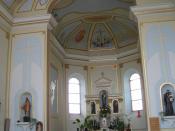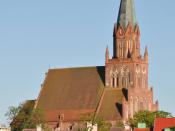"The genius of our ruling class is that it has kept a majority of the people from ever questioning the inequity of a system where most people drudge along, paying heavy taxes for which they get nothing in return." ~ Gore Vidal
The Medieval period in the Holy Roman Empire can be described as a time of hardship, poverty and suffering for general populace. In the era of human civilization that sees class disparity at its most severe; monarchs, aristocrats and privileged religious leaders held their lucrative positions by keeping the vast peasantry in a constant state of fear, isolation and subjugation. These three tools of oppression became the central facets of life for the common man and are major themes when discussing life in the middle ages. These tools were necessary for the upper classes in order to keep the "inferior" masses of serfs and peasants from rising above their deplorable living conditions and overthrowing the establishment of nobles and monarchs.
This upper-class relied wholly upon the essential slave labour provided by their subservient tenants and therefore could not allow any thoughts of freedom or equality to flourish in the public consciousness. This strategy of social oppression, as employed by the upper classes was so ruthlessly effective that Europe became a stagnant quagmire of violence among the rich and cyclic poverty among the poor for almost one thousand years, stifling scientific, artistic and social advancement. The stranglehold of oppression was only loosened after the cataclysmic events surrounding the Black Plague and increasing force from military powers outside of the strict medieval social order. Only after Europe was ripped from the clutches of class oppression could the Renaissance finally occur which allowed the Western world to catch up with Asia in terms of technological and social advancement .
The fear...


